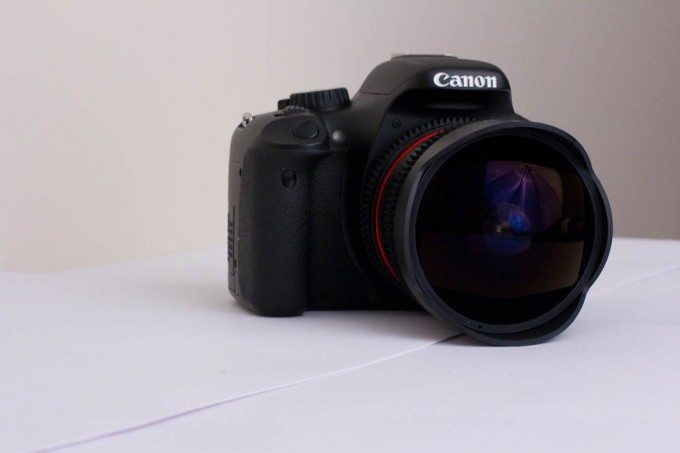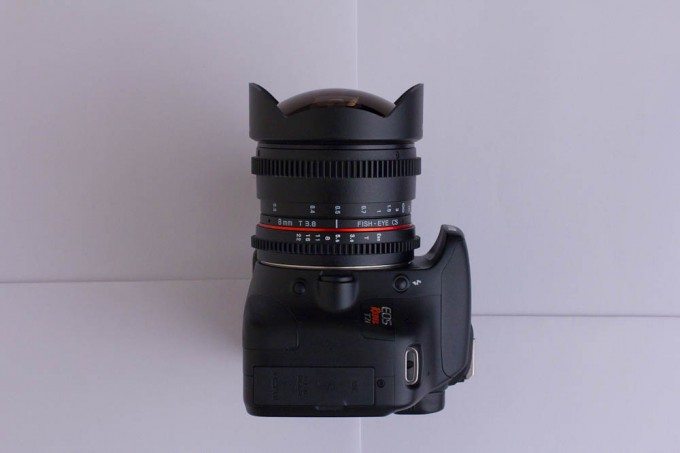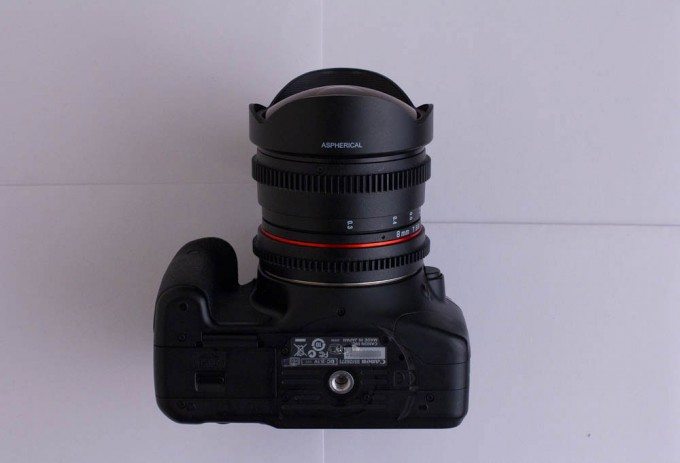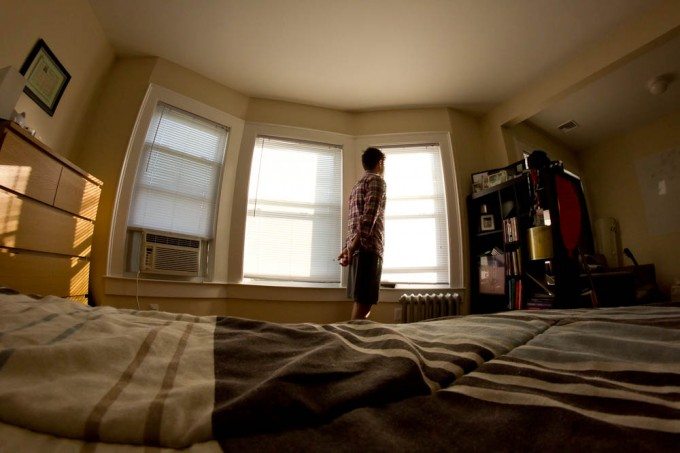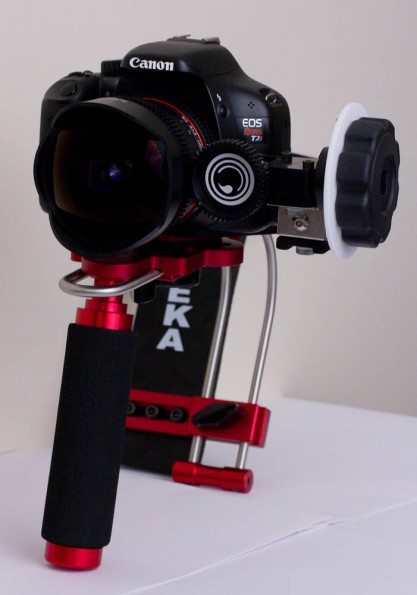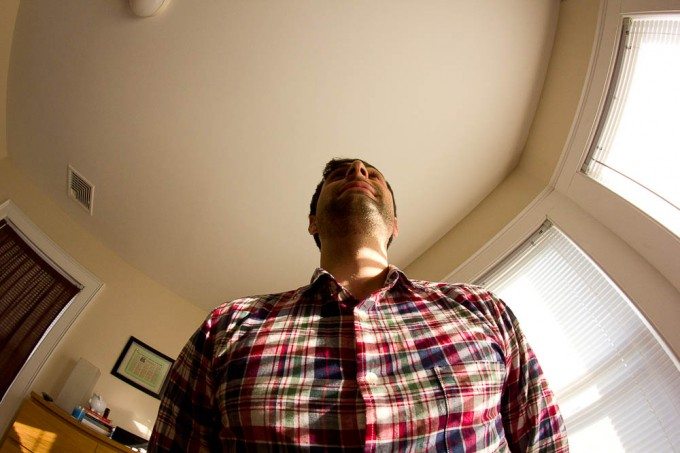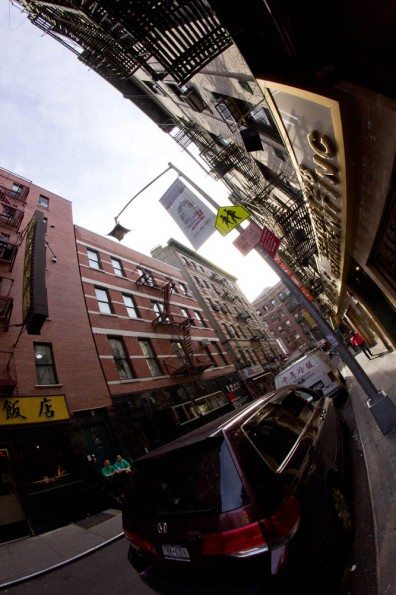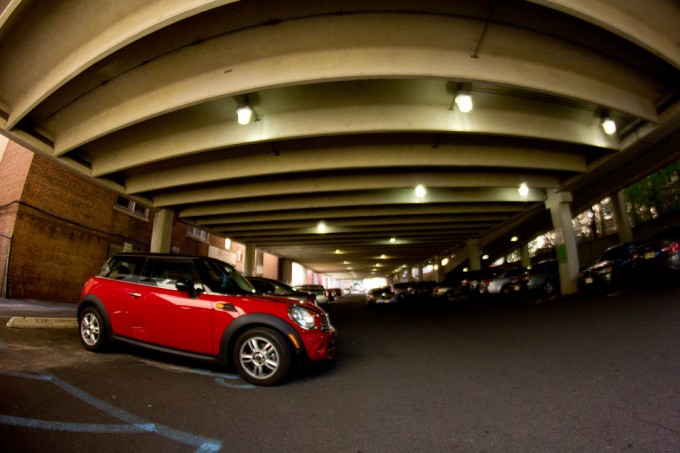Last Updated on 07/08/2012 by Thursten Kent
Rokinon’s new 8mm fisheye t3.8 cine lens was another whole experience of its own for me. Since I’ve never shot with a specialty lens like this before, I found the experience rather daunting to comprehend. I wanted to challenge myself. I did not take this lens off my camera for a long while. I was trying to understand it. In a way work with it to better see its uses and uniqueness. That’s when I kind of started to gain some respect for a fisheye lens.
Editor’s Note: This review is a bit of an experiment for us. This lens is a cinema prime, which means that it has T stops instead of F-stops. Since it is also meant for videography, we’re testing it a bit differently and trying to target the photographer that would also shoot video to add more to their portfolio potential. We’re open to suggestions on how we can make our cinema prime lens reviews better.
Ergonomics
This lens is modestly light at about a pound. The focus markings are clearly written in manner that pulling focus should not be too much of a task. To clarify, pulling focus means that you’ll need to focus while recording a video.
If I were to consider the size of the lens in comparison, it is somewhere close to Canon’s 17-40mm f4 L. The construction felt nice overall and the finish was also quite pleasing on the hand. The finish has a black matte look and a texturing to the paint scheme for better gripping.
Now, being a fisheye the front element will protrude a bit. But it’s not as massive as one would think. The front element is very compact for it’s size while still offering 180 degrees of visibility to the your images.
Focusing
Since this is a cine lens, you have teeth on the focusing ring that is meant to be paired with a follow focus of some kind. The pitch on the gear on the lens is the industry standard 32 pitch. In my test it worked just fine with my DFocus system.
The thing I needed to understand was focusing with a fisheye lens is it can be a bit of a task. This lens had no chip to work with the Canon’s metering and focus confirmation system: so you are on your own. I had relied on two tools to try and get some decent focus, using the pre-focusing option (magnification) on my Rebel with the screen to grab some sort of detail I was looking for.
The other is a bit different. I don’t have a standard Rebel as I’m using Magic Lantern (use at your own risk) and its peaking function to figure out what was in focus. I felt I had better luck with the peaking function.
The aperture on the lens is a click-less aperture. Now, why would you need a click-less aperture you might ask? Well, perhaps you want to adjust your exposure ever so slightly between the stop you are currently at and the next one up/down. This will give you that fine adjustment you are looking for that you might not have the ability to adjust in a click or electronic aperture lens. That is a necessity for a lens like this since mounting something like a Fader ND Mk II is nearly impossible.
At t3.8, the lens is kind of soft with a slight sign of what appears to be ghosting on the image. At t5.6 the image is really where it starts to shine. By t8, this I felt could be the sweet spot for this lens. It was wonderful and very crisp.
Image Quality
I felt the best way to see this lens was to stop it down at least t5.6 to get a nice image. T8 and I think you will like it even better. I thought the colors were pretty neutral and not over done. The lens had really nice sharpness on the higher t-stop range. Many users may opt for something like Canon’s Technicolor Cinestyle profile and adjust their colors in post.
This lens on my Rebel’s APS-C has a crop factor of 1.6x. So it’s really a 12.8mm. Distortion was definitely there and at times I felt like you could hinder its effect even more by which angle you shot at. If you wanted something more extreme in a look, I used more of a Dutch-angle to enhance the effect.
Included below is a very rough and dirty example of what video would look like with Rokinon 8mm T3.8 Cinema Lens . Just a quick note I applied some smoothCam to smooth out my shaky hand. I feel its applications can be left up to only your own imagination.
Ease of Use
As I’ve stated earlier in this write-up, it was a bit of a challenge to use this lens at first. There were some times where I did not trust the peaking reading from my camera or magnification was not giving me what I wanted. So, I did what I thought was the next best thing and just stomped the lens down. After a while though, I started to get comfortable with the lens and I was able to make some better judgments on focusing.
Conclusion
I had a lot of fun with this lens. Though it took me just a little bit of time to get the focus I wanted, I felt that extra work got me some images that were worth the added effort.
I just let me creative ambitions take me to whatever I saw through the viewfinder. Self-portraits could take an interesting perspective (just for fun, of course.) Or perhaps you want to add a distorted dream-like effect to scene in your movie. This can be a nice option to consider.
Like some of you, you might be pondering your next cinema camera to purchase. I myself am looking closely at what is coming in the next few months for sale. Perhaps you might have pre-ordered the Black Magic Cinema camera and are looking for a wide lens. Since this camera has a 2.4x crop factor, everything you mount on it will have a big impact on your lens choices. The Rokinon will be a 19.2mm on this 2.4x crop factor. Which will make it a very reasonably priced lens if you are looking for a nice wide-angle lens.
Please Support The Phoblographer
We love to bring you guys the latest and greatest news and gear related stuff. However, we can’t keep doing that unless we have your continued support. If you would like to purchase any of the items mentioned, please do so by clicking our links first and then purchasing the items as we then get a small portion of the sale to help run the website.


